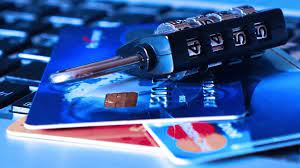How to Protect Yourself From Identity Theft

Identity thieves can use sensitive personal data to take out loans, use medical services, or gain other benefits in the victim’s name. Moreover, the victim’s credit rating can plummet as a result. Unfortunately, the consequences of identity theft can take years to overcome.
Often, victims of identity theft find out about it long after the fact. Red flags to look out for include receiving unexpected collection calls, getting mail about a debt you don’t remember having, or receiving bills for goods you never ordered.
Identity theft can happen to anyone. Here’s how you can protect yourself.
Use Complex, Difficult-to-Guess Passwords
If one of your vendors or business partners falls victim to a data breach, you should change your passwords immediately. It’s very easy to obtain password details in the wake of a breach, including passwords of moderate complexity. In addition, you should avoid generic information and common words when choosing passwords. It is important to avoid using your phone number, date of birth, or other personal information in your password.
Since it’s easy to forget a password, using a password manager is highly recommended. These convenient and user-friendly apps hold all of your information in one place, including passwords and security questions. It’s easy to guess a weak password. Therefore, you should not use similar passwords on different accounts, either.
Keep Your Data Offline
It’s difficult to access information that was never online. You don’t need to be an expert in cold wallets; an old laptop or desktop computer will suffice to hold your data. There’s no better way to protect addresses, bank details, and other information from cybercriminals. Smartphones and laptops are as easy to hack as desktop computers. To keep your personal data from being stolen, you can learn to recognize legitimate products or apps when downloading them. This can help you avoid the risk of downloading self-installing malware.
Place Fraud Alerts on Your Credit Report
By placing a fraud alert on your credit report, every company that processes a loan application on your behalf will confirm your identity before extending a loan. This makes it impossible for someone to open an account pretending to be you. Contact one of the three main credit bureaus to place a fraud alert on your credit report.
You’ll get a free copy of your credit report when you place an alert. Furthermore, you should check for suspicious activity when you receive it. Credit bureaus also offer a credit freeze to stop people from applying for a credit account or utility services without you knowing.
Check Documentation
Compare your credit card statements with receipts and review your bank account. In addition, you should also watch for unfamiliar transactions. Finally, it is important to destroy receipts, credit offers bank account statements, and expired credit cards.
Update Firewalls and Antivirus Software
Update your firewall if you need to use public wi-fi often. The best protection is a reliable virtual private network (VPN) provider. On your computer at home, you can install firewalls and virus detection software.
The Health Insurance Portability and Accountability Act (HIPAA) entitles everyone to a copy of their medical records. Accordingly, you can get a copy of your records and put it away in a safe place. You can also add new details to it with every medical exam you undergo.
Choose Security Questions Wisely
Choose security questions that no one knows the answer to but you. The answer shouldn’t be obvious. If the information needed to guess the answer is publicly available – a former address, a PO box number, or your wedding date – it’s best to select another question. Don’t choose questions about specific dates, colors, states, countries, or any other questions with answers that are limited in number.
Make Use of a Password Manager
Using the same password with all of your mobile gadgets and important financial accounts poses a significant security danger. If you do, a fraudster would just need to guess one password to obtain entry to the majority of your accounts.
To prevent an identity thief from accessing your files, mix up your passwords and use a different one for each account. Do not include your name or birthday with any codes, and update your password if you think an account has been hacked.
Keep an Eye Out For Phishing Attempts
Avoid clicking on any connections in emails or text messages that are questionable. Identity hackers use emails and websites that seem to be from your bank, credit card provider, mortgage lender, or other financial organization to deceive you into entering your account details or other private data in a cyber assault known as phishing.
These emails also request that you open an attachment that contains malicious malware that will be installed on your computer.
If you think a connection is fake, do not click on it, and never enter your username or password on an unknown login page. Never open an email attachment until you are sure what it is.
